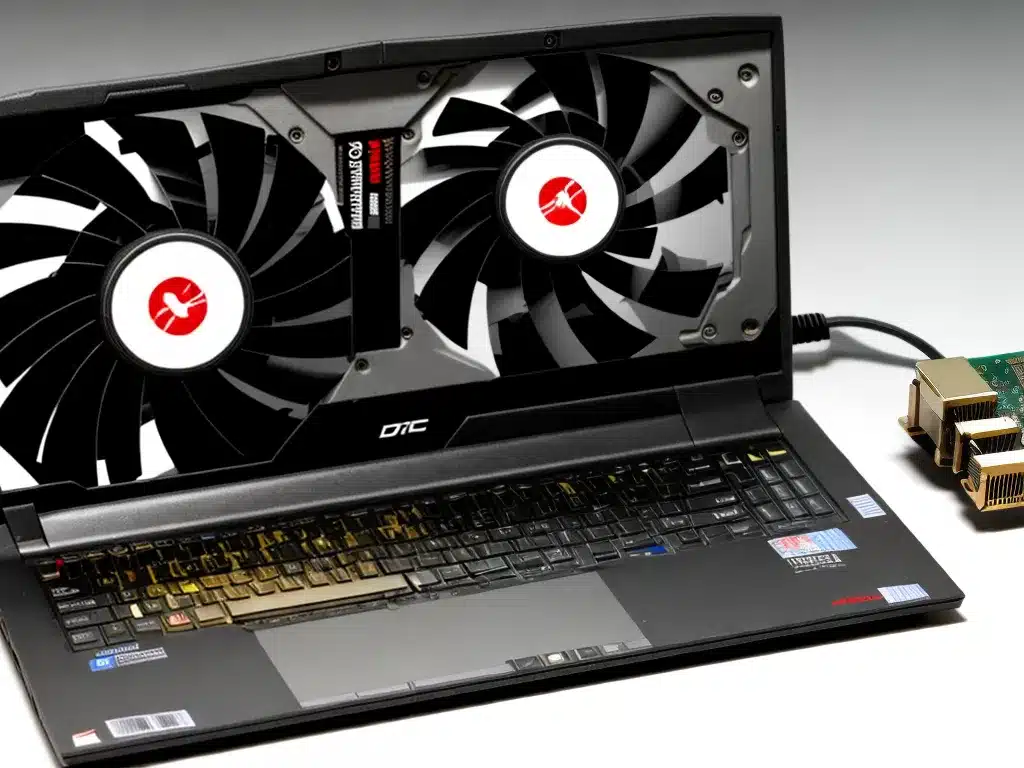Upgrading the graphics card in a laptop can provide a significant boost in gaming performance and visuals. However, it’s not as straightforward as installing a new graphics card in a desktop PC. There are several factors to consider when deciding if and how to upgrade your laptop’s graphics card.
Understanding Laptop GPUs
Laptop GPUs (Graphics Processing Units) come in two main varieties:
-
Integrated graphics – These are built into the laptop’s CPU chip and share memory with the system RAM. They offer decent performance for basic tasks but are not suitable for gaming or graphics-intensive applications. Examples are Intel UHD graphics and AMD Radeon Vega graphics.
-
Dedicated graphics – These are separate GPU chips on the laptop’s motherboard with their own dedicated video memory, like GDDR5 or GDDR6. They provide much better performance for gaming, video editing, 3D modeling, etc. Examples are NVIDIA GeForce RTX and AMD Radeon RX GPUs.
Can You Physically Upgrade the GPU?
For most consumer laptops, unfortunately the answer is no. The GPU is integrated onto the motherboard and cannot be changed or added to.
However, there are a few high-end gaming and workstation laptops that allow upgrading the dedicated GPU:
-
MXM graphics cards – Some gaming laptops use a modular MXM graphics card that can be replaced with a faster equivalent. This is becoming less common though.
-
Thunderbolt 3 eGPU – Using an external GPU (eGPU) enclosure connected via Thunderbolt 3, you can add a full desktop graphics card to certain Thunderbolt 3 enabled laptops. This can boost GPU performance substantially.
Software Solutions for Improving Performance
While physical GPU upgrades are limited, you can sometimes improve gaming performance by using software:
-
Game settings – Lower graphics quality settings in games to reduce the load on your integrated or older GPU. Disable unnecessary visual effects too.
-
Driver updates – Keep your GPU drivers updated from NVIDIA, AMD, or Intel. Later drivers may be better optimized.
-
Overclocking – Utilities like MSI Afterburner can slightly overclock your laptop’s GPU for extra performance, but results vary.
-
External cooling – Improving airflow using cooling pads or stands can allow the GPU to sustain higher speeds and avoid throttling.
-
Windows settings – Adjust power and performance settings in Windows to favor performance over battery life and prevent throttling.
When to Consider a New Laptop
If your laptop’s graphics performance is severely limiting the games or applications you want to use, upgrading the whole laptop may be necessary for a major improvement.
Consider a new gaming or workstation laptop if:
- You have an integrated GPU and want to play modern games.
- Your dedicated GPU is extremely old or low-end.
- The GPU is soldered onto the motherboard, restricting upgrades.
- You need graphics capabilities beyond what your laptop can provide, even with eGPUs.
The latest GPUs like NVIDIA RTX 30-series or AMD RX 6000-series deliver much better speeds and capabilities compared to older generations.
Conclusion
While upgrading a laptop GPU is restricted to high-end models and eGPUs, there are some software tweaks to modestly improve integrated graphics performance. But at a certain point, you’ll need to consider purchasing a new system altogether if your needs outgrow your current laptop’s capabilities. Research GPU options from NVIDIA and AMD when shopping for a laptop best suited to your graphics requirements.













